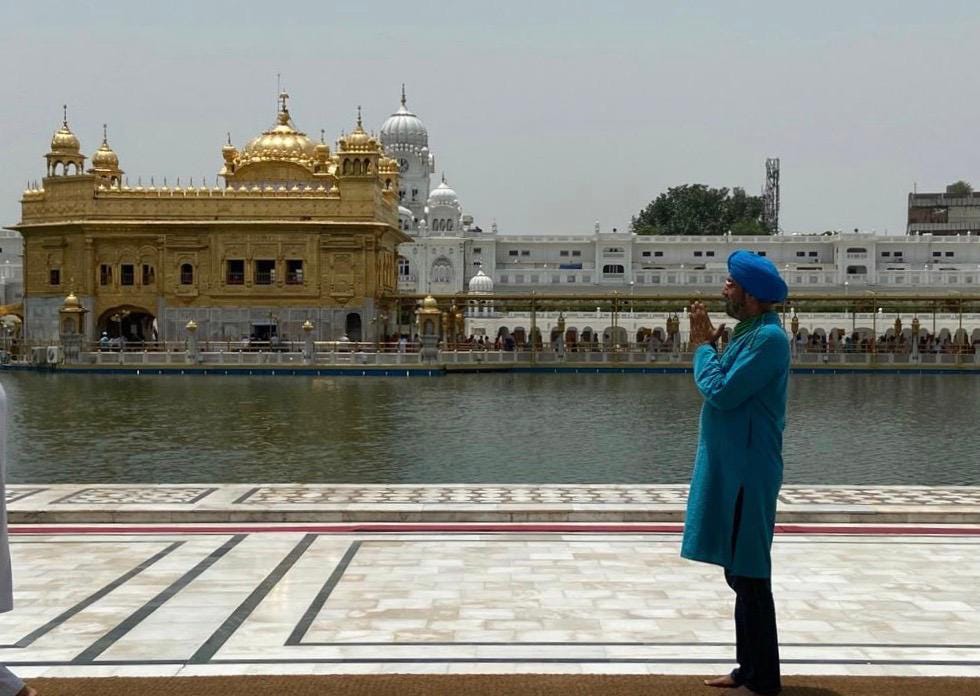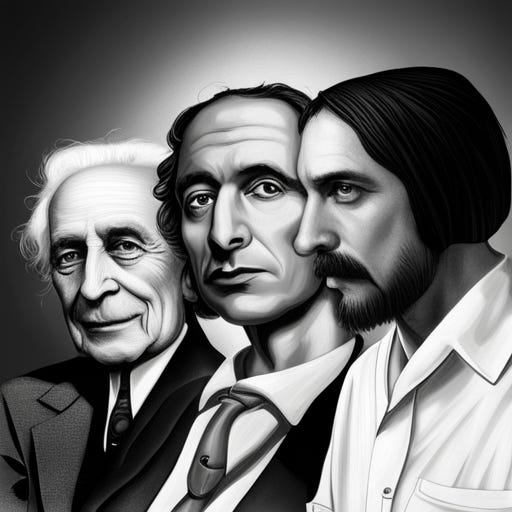"Morality and Mortality: Lessons for Eternity in Life's Finite Canvas"
Transcending the Threshold: a Deeper Understanding of the Intersection Between Mortality and Morality, and Its Enduring Influence on the Infinite Continuum of our Existence.
Morality and Mortality- are they connected?
The words 'mortality' and 'morality' both have roots in Latin. 'Mortality' comes from 'mortalis', which means 'subject to death', while 'morality' comes from 'moralis', which is related to one's character or disposition. These two words are fundamental in our understanding of life - 'mortality' reminds us that life is finite and death is inevitable, and 'morality' gives us a guide to differentiate right from wrong and helps shape our character. But the connection between these two terms goes beyond their Latin roots - they intertwine to form a rich tapestry of thoughts that impact our decisions and actions, providing philosophical and spiritual insights into how we live our lives.
Bhutan— visualize your death daily: Every religion and philosophy provides unique insights into this connection. Each faith explores the transitory nature of earthly existence and the eternal trajectory of the soul, illustrating how the inevitability of mortality informs our moral choices. This relationship acquires a special resonance in Bhutan, the 'happiest country in the world.' In this predominantly Buddhist nation, the practice of daily death contemplation strips away the ego, a source of suffering, reminding individuals of their limited time and the urgency to live a meaningful life.
What religions say?
Christianity and Islam echo this sentiment. They posit the existence of an afterlife, where Heaven and Hell serve as the ultimate realms of divine justice, and the soul's abode is determined by moral actions in mortal life.
Hinduism and Sanatan Dharma delve into the cycle of Samsara — the eternal wheel of birth, death, and rebirth — governed by the laws of Karma. Morality becomes a spiritual necessity, shaping one's journey through life towards Moksha, the final liberation.
In the context of Hinduism or Sanatan Dharma, life's journey extends far beyond the constraints of physical death. Guided by the doctrine of Samsara, the eternal soul, or Atman, experiences a cyclical progression of birth, life, death, and subsequent rebirth. As the soul departs the mortal body, it embraces a new embodiment, bearing the consequential imprints of deeds or Karma amassed over past lives. This cycle of reincarnation persists until the attainment of Moksha, a state of liberation wherein the individual soul coalesces with the divine entity, Brahman, thus ending the cycle of births and deaths.
This philosophy accentuates the presence of temporary realms, namely heaven (Svarga) and hell (Naraka), which represent the karma-induced experiences of the soul post-death. Svarga, an abode of happiness and bliss, serves as a temporary haven for virtuous souls with positive Karma. On the contrary, Naraka signifies a realm of retribution, where souls bearing negative Karma undergo punishments corresponding to their earthly transgressions. However, unlike other religious interpretations of hell, Naraka isn't eternal - upon serving their penance, souls reincarnate into the world. These teachings underscore the temporary nature of Svarga and Naraka and promote the pursuit of Moksha, emphasizing the importance of righteous living, moral duty (Dharma), and spiritual enlightenment.
Sikhism upholds the immortality of the human soul, emphasizing its spiritual journey through life and beyond. Sharing philosophical parallels with Hinduism, Sikhism endorses a cyclic existence encompassing birth, life, death, and reincarnation. This cycle persists until the individual soul achieves union with the supreme soul, Akal Purakh , attaining a state of eternal serenity. The metaphoric representation of this fusion resonates with a water droplet rejoining the ocean, emphasizing the quest for oneness with the divine through a life steeped in righteousness, devotion, and altruistic service to humanity, as enshrined in the holy Sri Guru Granth Sahib.
Sikhism acknowledges the concepts of heaven (Sachkhand) and hell but describes them them not as eternal realms of reward or punishment, but states of consciousness experienced in earthly life. The scriptures illustrate a heavenly existence as a life lived in remembrance of God, truth, and selfless service, while a hellish existence is a life dominated by ego, ignorance of God, and deceit. The path to liberation from the cycle of reincarnation, as per Sikhism, is through a virtuous and truthful life dedicated to the service of humanity and constant remembrance of God. The religion discourages the fear of hell or desire for heaven as driving forces behind moral conduct, championing love for God and humanity as the spiritual lodestar guiding the Sikhs.
Gurus and Literary Masters
Literature often brings forth poignant expressions of these contemplations. Shakespeare muses, "When beggars die, there are no comets seen; the heavens themselves blaze forth the death of princes," reminding us of the universality of death, and hence, the significance of moral conduct irrespective of social status. A prince here could be interpreted not only as a royal scion but as a doer of good deeds.
Lord Alfred Tennyson in 'The Brook' offers the phrase, "For men may come and men may go, but I go on forever," an emblem of the eternal soul. His 'The Passing of Arthur' echoes the cyclical perspective on life and death with "The old order changeth, yielding place to new." A beautiful juxtaposition of the transience of the affairs of men against the permanence of God.
A verse from the Bhagavad Gita (Chapter 2, Verse 20) proclaims, "For the soul there is never birth nor death... It is unborn, eternal, ever-existing, undying and primeval. It is not slain when the body is slain," reinforcing the idea of the soul's imperishability. Implicit is the warning as well as the assurance that your karmic points, both good and bad, will travel with you.
Salok Mahala 9: ( ਸਲੋਕੁ ਮ: ੯:)—the Golden Verses
Sri Guru Granth Sahib provides a cogent reminder of life's transience:
"ਚਿੰਤਾ ਤਾ ਕੀ ਕੀਜੀਐ ਜੋ ਅਨਹੋਨੀ ਹੋਇ ॥
ਇਹੁ ਮਾਰਗੁ ਸੰਸਾਰ ਕੋ ਨਾਨਕ ਥਿਰੁ ਨਾਹੀ ਕੋਇ ॥" (see footnote).
This verse inspires us to embrace our moral compass, mindful of the fleeting nature of existence1. An exhortation to the Sikhs to prioritize sewa and simran, in addition to kirit karna (to earn your bread by the sweat of your brow).
Beginning of the end? No, just the end of the beginning.
Our brief and rudimentary exploration draws to a poignant close, affirming a universal truth: the awareness of mortality does not breed fear or despair, but rather, it instills us with an invigorating sense of morality. The finite span of our earthly existence is not a tether, but an open invitation to embrace a life defined by righteousness, to strive for a nobler good. Mortality does not symbolize an end, but rather a gateway towards new beginnings. It serves as a reminder that irrespective of our religious beliefs, the true legacy we leave behind on this Earth is the rich tapestry of our moral deeds.
What’s our true legacy? This resonance of sentiment permeates all faiths, urging us to amass positive karmic credits, for they form not the purest form of inheritance we bequeath to this world but also the priceless wealth that we carry to the next. Indeed, our most enduring legacy is not the tangible wealth we accumulate, but the impactful impressions we etch in the hearts and minds of those we leave behind. Thus, as we navigate the ebb and flow of life, we are reminded that our true worth is not measured by our material possessions, but by the indelible footprints of compassion and kindness that we leave on the sands of time.
Indeed, our authentic legacy is etched not in our worldly acquisitions, but in the enduring imprints we leave within the collective psyche, long after our departure2.
((The first two graphics have been generated through #AI_art, using DreamStudio))
Page 1429, Line 4
ਚਿੰਤਾ ਤਾ ਕੀ ਕੀਜੀਐ ਜੋ ਅਨਹੋਨੀ ਹੋਇ ॥
चिंता ता की कीजीऐ जो अनहोनी होइ ॥
Cẖinṯā ṯā kī kījī▫ai jo anhonī ho▫e.
People become anxious, when something unexpected happens.
Guru Teg Bahadur - view Shabad/Paurhi/SalokPage 1429, Line 4
ਇਹੁ ਮਾਰਗੁ ਸੰਸਾਰ ਕੋ ਨਾਨਕ ਥਿਰੁ ਨਹੀ ਕੋਇ ॥੫੧॥
इहु मारगु संसार को नानक थिरु नही कोइ ॥५१॥
Ih mārag sansār ko Nānak thir nahī ko▫e. ||51||
This is the way of the world, O Nanak; nothing is stable or permanent. ||51||
Guru Teg Bahadur ji -
Tesla, Oppenheimer, Osho and Einstein: Understanding Life and the Universe
Introduction: Throughout the annals of history, there have been exceptional individuals whose ideas and insights transcend time, inspiring us to contemplate the profound mysteries of life and the universe. Nikola Tesla, Acharya Rajneesh (Osho), Albert Einstein, and J. Robert Oppenheimer are among these visionary thinkers who have left an indelible mark …






